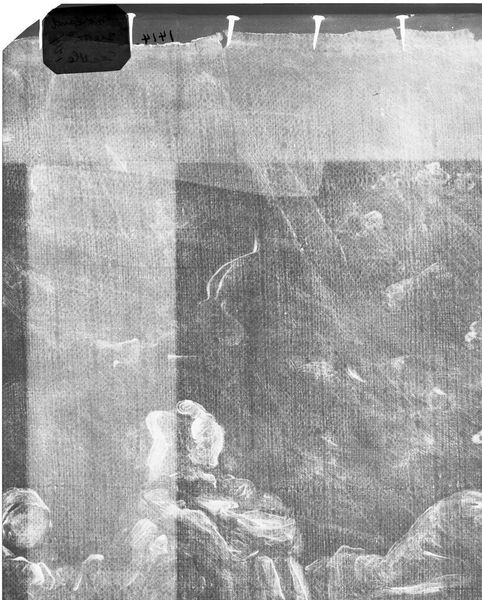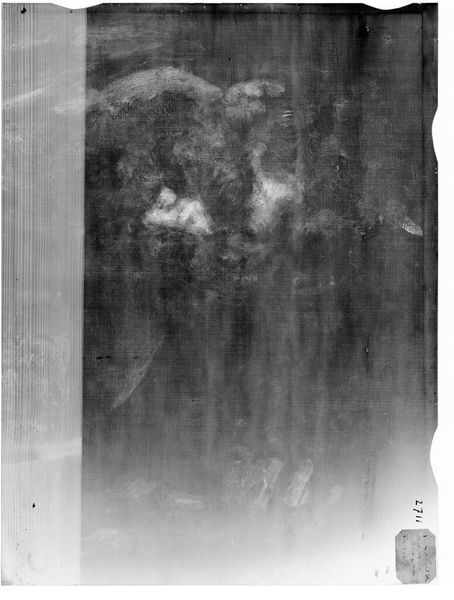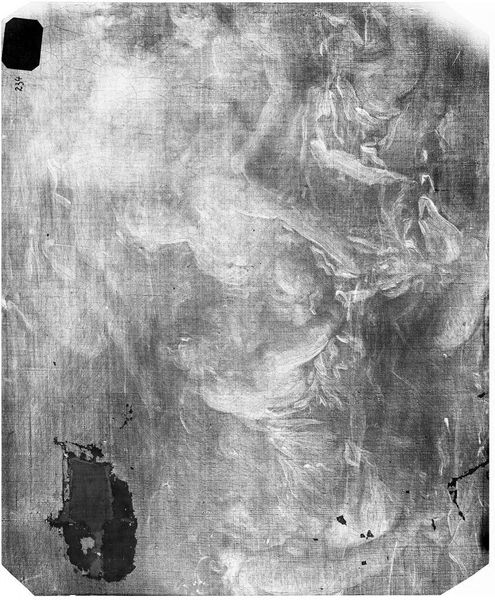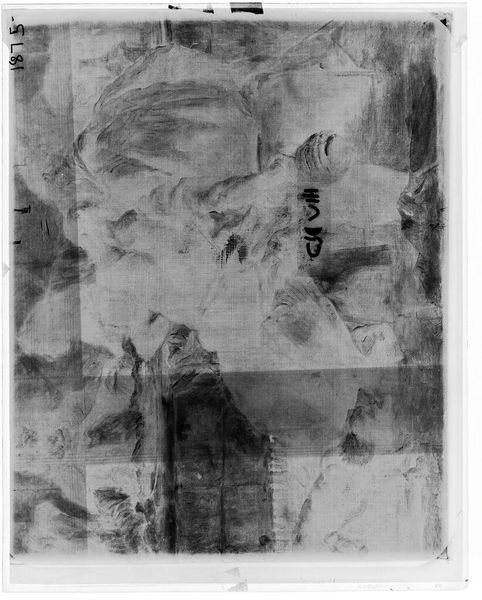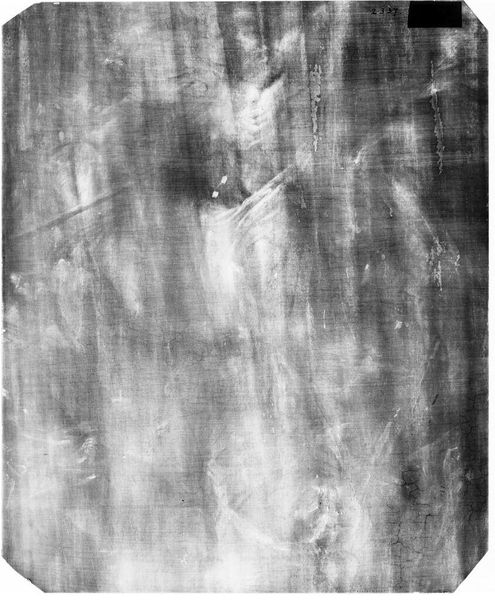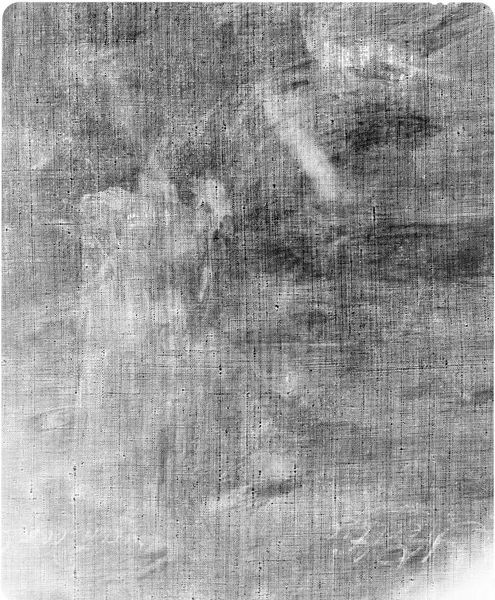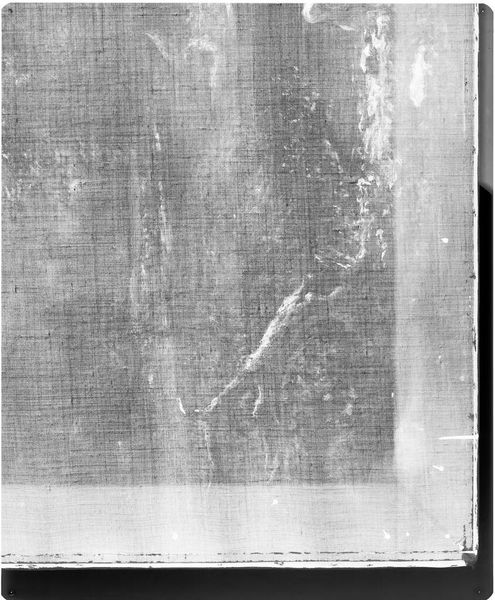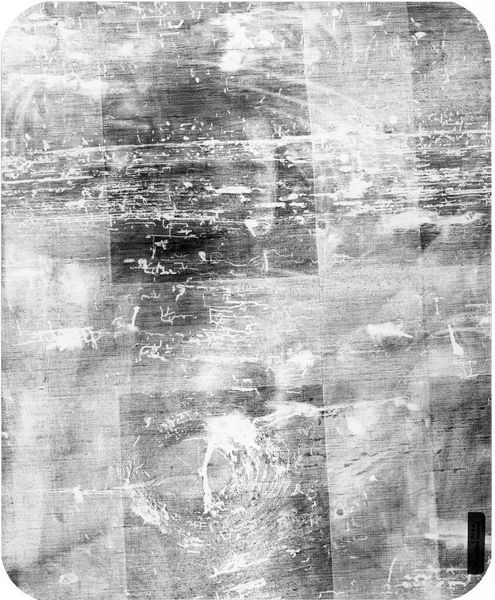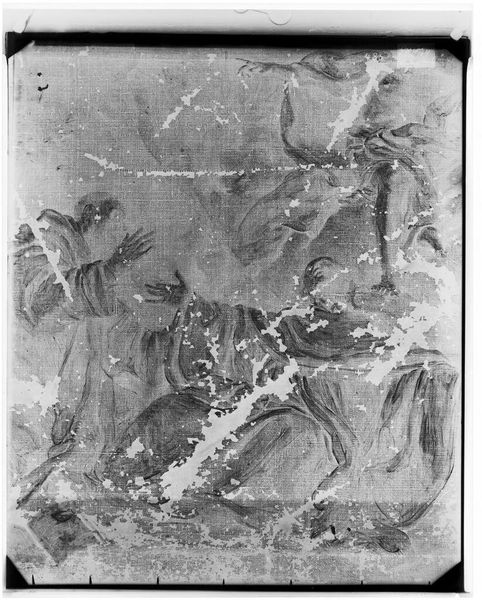
Copyright: CC0 1.0
Curator: This is an X-radiograph of John Singleton Copley's "Mrs. Joseph Mann", residing here at the Harvard Art Museums. It’s like peering beneath the surface of time itself! Editor: My first impression is a ghost in linen. A spectral presence barely clinging to the woven grid of the canvas. Curator: It reveals underpainting, the artist's process, revisions invisible to the naked eye. You can see how Copley built up layers, altering the composition. Editor: The darkness pooling at the base, perhaps where the sitter’s dress rested, creates a somber, almost unsettling foundation. What secrets does this reveal about Copley's technique? Curator: It humanizes the process. Painting wasn't this immaculate, pre-ordained act. It was messy, intuitive, and evolving. Editor: Indeed. The stark contrast forces us to confront not just the image, but the making of the image. It invites a re-evaluation of artistic intention. Curator: Seeing art this way transforms our understanding—it’s like witnessing a painter’s private conversation with the canvas. Editor: I’ll never look at a portrait quite the same way again. It encourages us to consider the unseen labor that shapes our perceptions.
Comments
No comments
Be the first to comment and join the conversation on the ultimate creative platform.

